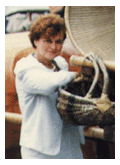|
Africa
Fashion
... for traveling, attending gala events, meetings,
or looking good for any occasion, has been a number
one topic in Africa Travel Magazine and its
powerful website. We use Webtrends to
monitor our site, plus the power of Google and
Yahoo to see how we stack up against other media.
You will be surprised. Below is a link to my first
article on the subject of hats. I have a passion
for hats, as you will learn. African
Fabrics Fashion
Views |
|
What's
Your Hat-itude? I
am fascinated, and often captivated by the designs,
textiles and in particular, the head wear, hats,
coiffure, turbans and wraps of indigenous peoples
around the world. In many African societies, the
choice of colors and fabrics is outstanding and has
special significance to the wearer. Hats often tell
stories of everyday life, with its struggles,
spiced by uplifting periods of joie de vivre. While
I have worked in various African countries and
journeyed widely in my earlier career as a travel
agent, my ten year involvement with Africa Travel
Magazine has brought the importance of African
fashion into sharp focus. Speaking of focus, our
library of African fashion photos is unbelievable.
It's grown so much, we're considering an issue
dedicated solely to African fashions. How did this
love affair start? Our very first Africa Travel
Association Fashion Show was hosted by Chief
Margaret Fabiyi, who has supplied many of my
favorite wardrobe items. Her company is based in
Lagos, Nigeria. Instant
Decision. Fashion will Rule! Hats
through the ages Historically
Speaking More
to Come |
 ...
...

 While
we live in Canada's Pacific coast, as far away from
Africa as you can get, we are always having
conversations about this wonderful continent, its
people and places, simply because our hats are
recognized by Africans who are working here or are
attending university. As a confirmed adventurer , I
enjoy a visible link to the Africans who work so
hard to create these fabrics, hats and other
wardrobe items. By supporting African designers and
artisans, our publisher, Jerry Bird and I are
contributing on behalf of the magazine, to the
economy and cultural heritage of African societies
. We are also demonstrating to all we meet in
person, on our web sites and in person, that there
is an expanding market opportunity for African
clothing and fashions. Each hat or article Jerry
and I wear promotes the country of origin. The most
noticeable items that occupy our closet to the
bursting point, are found in the collection of hats
from different African countries. We wear each one
with pride; what you might call a positive
hat-itude!
While
we live in Canada's Pacific coast, as far away from
Africa as you can get, we are always having
conversations about this wonderful continent, its
people and places, simply because our hats are
recognized by Africans who are working here or are
attending university. As a confirmed adventurer , I
enjoy a visible link to the Africans who work so
hard to create these fabrics, hats and other
wardrobe items. By supporting African designers and
artisans, our publisher, Jerry Bird and I are
contributing on behalf of the magazine, to the
economy and cultural heritage of African societies
. We are also demonstrating to all we meet in
person, on our web sites and in person, that there
is an expanding market opportunity for African
clothing and fashions. Each hat or article Jerry
and I wear promotes the country of origin. The most
noticeable items that occupy our closet to the
bursting point, are found in the collection of hats
from different African countries. We wear each one
with pride; what you might call a positive
hat-itude!